FREE Bonus: NFTs can be confusing without knowing the terminology.
That’s why we created a 3 page summary to show you the definitions of the most common NFT lingo!
Click the button to download your free bonus now and you will become more NFT savvy than 99% of your peer artists 🙂
NFTs are important for fine artists, here to stay, and not as complex as they may seem. Here's why...
As NFTs have created headlines by selling for millions of dollars at Christie’s, increasingly we are being asked, how do NFTs apply to traditional artists?
So here it is: the Ultimate Guide to NFTs for Fine Artists!
What are NFTs?
NFT is an acronym for Non-Fungible Token.
We’ve seen dozens of headlines about people paying millions of dollars for these, celebrities getting involved, and how they may be harmful for the environment.
Given all this news, what exactly are they?
Let’s demystify NFTs with some familiar analogies…
Dollars and Diamonds
Dollars
One dollar is interchangeable with another dollar. Whether it’s a crisp green bill, four quarters, or a dollar in your bank account. A dollar is a dollar.
This property of dollars is called fungibility.
Dollars, Euros, and Yen are each fungible. So too, are cans of Coke, (new) Toyota Prius’, and bars of gold.
They are all fungible.
Diamonds
On the other hand, every diamond is unique. In terms of color, clarity, brilliance, and carats, every diamond is one of a kind.
This property is called non-fungibility. Gemstones, fine artworks, and vintages of wine are each non-fungible. So too, are French Chateaus, hand-crafted furniture, and albums signed by The Beatles.
They are all non-fungible.
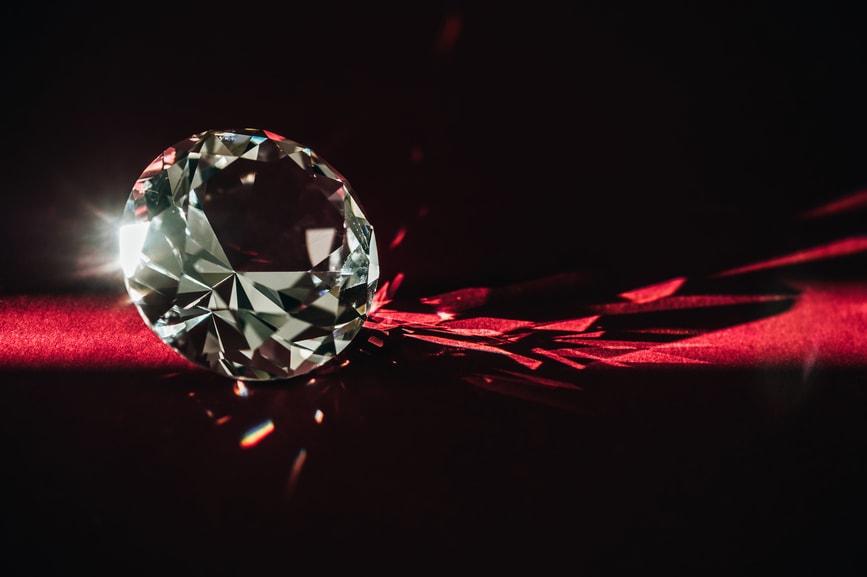
Tokens: Fungible and Non-Fungible
The difference between dollars and diamonds also applies in the digital world.
Most cryptocurrencies, like Bitcoin, are fungible–one BTC is just as good as another BTC. The same goes for the majority of digital tokens.
However, there are also non-fungible tokens.
Each NFT is unique and none can be copied.
How?The technical answer is “public ledger triple-entry accounting enforced by cutting edge cryptography and proof-of-work consensus”.
But we can simply think of it as crypto magic!
NFTs Connect to Digital Art
Perhaps you’re wondering, “How do tokens relate to the digital artworks that NFTs are famous for”.
Excellent question!
Simply, an NFT proves ownership of a digital artwork. The artwork (image, video, or music file) is actually separate, but the NFT proves ownership.
You can think of the NFT like a digital Certificate of Authenticity for a painting.
Wait–Can’t People Copy the Image?
Yes. Of course, like any digital image on the internet, an NFT image can be copied. But the NFT can not.
There is only one original Mona Lisa painting, but many tourists buy posters in the gift shop.
In the same way, an NFT certifies a digital artwork as the genuine, unique original.

Why are NFTs Important for Fine Artists?
NFTs are here to stay. They were first created in 2015, and have since only continued to increase in volume, value, and use cases. While they may go through bubbles, they are not going away.
Just like each new technology, they may initially seem complex, unnecessary, and perhaps even silly.
Looking back, however, websites, email lists, and Instagram may have also seemed similar.
As a professional artist, the chances are you now realize the value of these digital tools for your art career. As a fine artist, NFTs offer an opportunity to add to your creative toolkit, add a revenue stream, and stand out from the crowd.
Add to your creative toolkit
If you already sell original paintings and limited edition prints, you can add another string to your bow by offering limited edition NFTs.
Add a revenue stream
NFTs are inexpensive (or indeed, free) to create, and yet you can sell them globally immediately. In this way, they can be a fairly simple way to add an additional source of revenue for your professional art practice.
Even better, you can receive royalties on secondary sales of your NFTs in perpetuity! More on that later…]
Stand out from the crowd
Not many people are making NFTs yet. In particular, not many fine artists.
If you start now, you can make a splash as an innovator by combining the latest technology with your natural creativity.
And don’t worry–it’s not rocket science to make an NFT–once you learn how it’s easy! (We explain how to get started in this article)
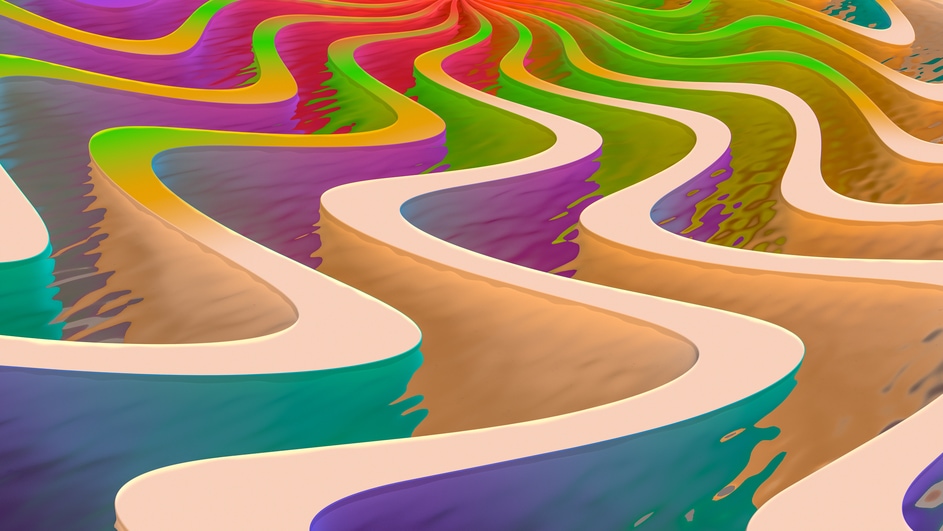
What can Fine Artists Mint as NFTs?
If you paint with oils or watercolors, sculpt with bronze, or sketch with charcoal, you may be wondering how you can create a digital artwork. If you are a digital photographer, perhaps this is simpler for you. Whichever your medium, the question remains,
“NFTs are digital–so what can a traditional fine artist make?”
The answer is incredibly simple: anything you already share on Instagram can be minted as an NFT. Yes, images of your art, work-in-progress sequences, and Reels can all provide the content of NFTs for fine artists.
On top of this, there are some extra features that can add some magic to this. More on this below.
First, let’s cover how to make your first NFT–don’t worry, it’s not rocket science!
Are You Ready to Mint an NFT?
As a fine artist, perhaps you’re curious about this, but not really sure if this is for you, or if you are professionally ready. Let’s pause for a moment to consider.
If you have a computer and a digital image, you are technically ready to mint an NFT. However, a little more is required…
While NFTs may appear to be complicated block boxes of cryptographic wizardry, once you know how to make them, they are a piece of cake. The real challenge is in finding an audience who appreciates them.
Just like selling traditional artworks, you need an audience.
Ideally, you already have an audience that you can market to and share your creative journey with. However, it’s quite possible that not all of your existing audience will appreciate this new ‘digital revolution’, so you may need to both educate your following, and perhaps expand to more receptive people also.
Educating and expanding your audience
Simply talking about NFTs on social media can be quite polarizing. An excellent approach in doing so is therefore to be extremely humble and to gently educate.
The chances are your audience knows less than you about NFTs, and perhaps has not even heard of them. Because of this, it can be wonderful to simply share your journey. For example, with statements such as:
“I’m just learning about NFTs”“Considering minting my first NFT–what do you think of them?”“Excited to share my first NFT–happy to answer any questions you may have about these :)”
This can simultaneously let people know what you’re doing, inform people who are new to this, and attract people who share the interest.

Which is the Best NFT Platform?
Perhaps you’ve heard of some NFT Platforms. To name a few: OpenSea, SuperRare, Foundation, and LooksRare.
Which one is the best? Which one is the biggest? Which NFT platform is the easiest to get started?
Good questions. There are many platforms–each with different fees and features, new ones are appearing, and they are all evolving fast. It can indeed be overwhelming!
There are essentially two kinds of NFT platforms: Open, and Curated.
Open NFT Platforms and Curated NFT Platforms
Open NFT Platforms
Open Platforms allow anyone to mint NFTs and list their digital artwork for sale. They are permissionless.
The three largest and most significant Open NFT Platforms are OpenSea, Rarible, and LooksRare.
Wonderfully, any artist can use these Open Platforms to get started immediately. The unfortunate flipside of this, is that they can become crowded with poor quality digital artwork, that some would call junk. In the worst cases, the artwork is not original.
Curated NFT Platforms
In contrast to Open Platforms, Curated Platforms require an invitation or application.
This is somewhat similar to how fine artists may apply or be invited to exhibit at an art gallery.
Major Curated NFT Platforms include SuperRare, Foundation App, and NiftyGateway.
Some credibility goes with having your NFT included on these platforms. Also, these marketplaces are less crowded and more exclusive. The flipside of all of this is of course, that not everyone is accepted for inclusion. In practice, even a successful application may require a long waiting period before being approved.
FREE Bonus: NFTs can be confusing without knowing the terminology.
That's why we created a 3 page summary to show you the definitions of the most common NFT lingo!
Click the button to download your free bonus now and you will become more NFT savvy than 99% of your peer artists :)
Which NFT Platform to Start on
Okay, there are many options–where should you start?
Our recommendation is to start on an Open NFT Platform. It’s free, permissionless, and you can mint your first NFT as soon as you wish. (Today if you’re really keen!)
Use OpenSea, Rarible, or LooksRare.
Then, once you’re familiar you may like to look more closely at the Curated NFT Platforms.Apply to SuperRare. Ask your fellow artists or reach out to NFTs artists you admire, asking for an invitation to Foundation App (anyone who has sold an NFT on their platform can invite others).
Let’s walk through how to mint your first NFT using Rarible.
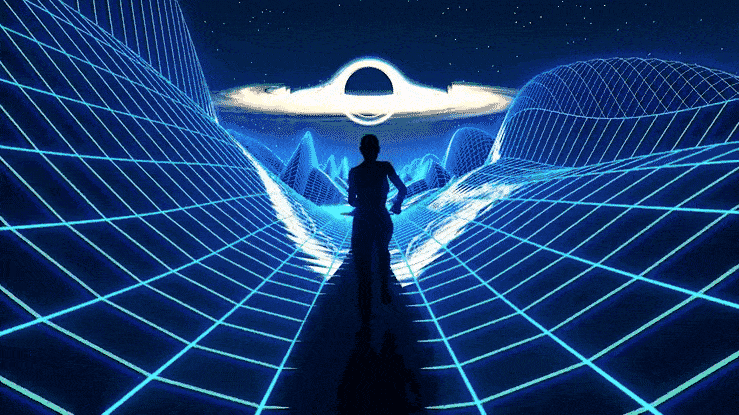
The Easiest Way to Create Your First NFT
Here’s a brief guide to minting your first NFT on Rarible. We chose Rarible as an example, for three reasons:
- They are one of the largest NFT Platforms
- They allow you to create for free (with ‘Lazy Minting’ no need for cryptocurrency to pay ‘gas’ to get started)
- They are easy to use
Note: there are different blockchains. This guide applies to Ethereum, the largest blockchain for NFTs.
Minting Your First NFT on Rarible
- Go to Rarible.com
Use a desktop computer/laptop–it’s much easier than mobile. Use Chrome, Brave, or Firefox browser.
- Click “Create”, Choose Ethereum, and “Sign In”
- Click “Install MetaMask”
MetaMask is a cryptocurrency wallet. Go through the steps of installing it and adding it as a browser extension. Choose “Create a Wallet”, agree to the terms, and select a password. - Write your ‘Secret Recovery Phrase’ down on paper.
Yes, on paper.These 12 words allow you to recover everything in this wallet, even if your computer breaks or is stolen.Do NOT copy/paste your recovery phrase to a digital file.Do NOT take a screenshot.To know that any cryptocurrency and NFTs in your wallet are secure, write these 12 words in order on paper, and put them in a safe place. - Refresh Rarible.com
You now have a cryptocurrency wallet to connect to Rarible.(This is called Web3. No emails, usernames, and passwords–just connect with your wallet.) - Sign in with MetaMask
Click ‘Sign in with MetaMask’, click ‘Connect’, and accept the terms. - Create!
Click ‘Create’, and select ‘Single’. - Design Your NFT
Upload a digital file (PNG, GIF, WEBP, MP4, or MP3. Max 100mb.)- Select a price for your NFT, or if you do not wish to put it for sale, unselect ‘Put on Marketplace’- Write a name and description- Select the percentage of secondary sale royalties that you’d like to receive (10 % by default–more on this below)(There are further options, but this is the simple basic version to start) - Create Item!
Click ‘Create Item’ and Sign the transactions that pop up in MetaMask. Voilà! Congratulations–you just created your first NFT! You’ll see some links to share this with people.
Royalties
An outstanding feature that artists are excited about is that they offer ongoing royalties for the creator. That is, every time your digital artwork is resold, you can receive a percentage of the sale price.
This is a striking contrast to the analog art world! Traditionally, once an artist has sold their work, they will not see a dime more from it–even if it appreciates in value a lot.
If your NFT is resold, however, you can receive 5 or 15 % of those secondary sales in perpetuity! You can set the royalty percentage on each platform.
Lazy Minting
Please note, the process described above uses what is called ‘Lazy Minting’. This means that you created your NFT without paying the infamous ‘gas’ for transactions. We recommend this as it makes it easy for you to get started without needing cryptocurrency such as Ether first.
Lazy Minting is available on Rarible and OpenSea. Most other platforms require paying gas to mint–this can be a significant cost in the case of the Ethereum blockchain.
It’s good to be aware that these Lazy Minted NFTs are not actually stamped onto the blockchain until someone pays gas. This will either be the purchaser–who pays to purchase and mint your NFT, or you the artist could choose to pay it if you wish to send your NFT to someone. If you wish to pay for the gas yourself, you will need some Ether (cryptocurrency). You can buy this within your Metamask wallet or on an exchange such as Coinbase.
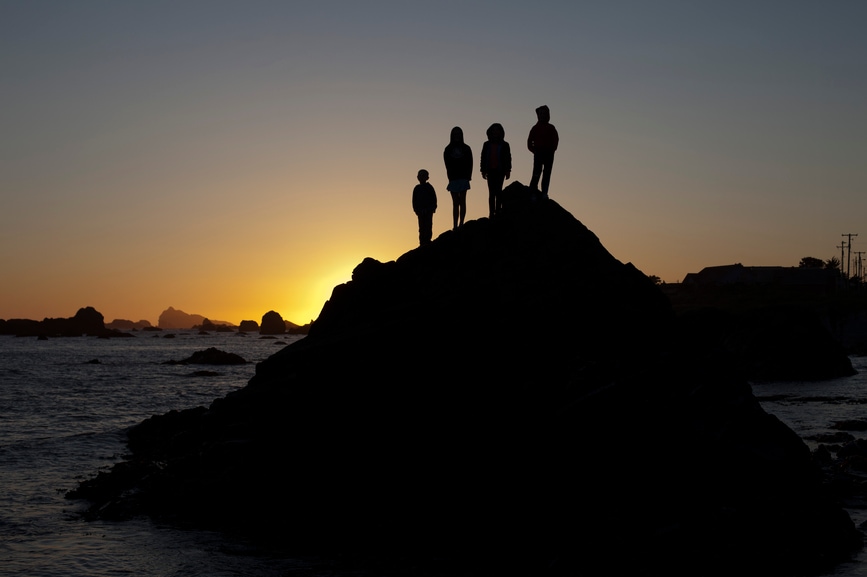
Four Features to Make Your NFT Stand-out
The majority of NFTs are images. Simple .jpg or .png files. Basic.
A simple image is fine, but there are also ways you can really make your NFT shine, by using some little-used tools and features. Without the need for highly technical things like augmented reality, here are four powerful features you can use to distinguish your NFTs.
1. Make a Video
Just as on Instagram, a video can often catch more attention than a static image. The style of an Instagram Reel or a TikTok video can work well. Short and sweet–say approximately 30 seconds long. Add music for another dimension.
The file format of .gif tends to look good on NFT platforms as the video continues to play in a loop.
2. Add ‘Hidden Content’
Several NFT platforms–including Rarible, which we described above, allow you to add ‘Hidden Content’ to your NFT.
This is content that only the NFT owner can unlock and view, even though anyone may publicly see the NFT itself. As an exclusive bonus for your collector, this can add an extra dimension.
What Content can be Hidden?
You can include a coupon code or a discount voucher for your work. You could put the link to a file or folder–perhaps to unreleased art, or behind-the-scenes images of the work-in-progress. Or you could write a personal message to your collector.
Essentially, you can use text as Hidden Content, although technically you can use Markdown language to include other things such as images.
3. ‘Nest’ tokens or art in your NFT
‘Nesting’ is putting things inside your NFT. These things can be cryptocurrency tokens, such as USDC (a dollar stablecoin; 1 USDC = $1). They can be a cryptocurrency that earns interest inside your NFT. Or indeed, they can be NFTs inside your NFT. This is truly innovative and few are doing it… yet!|
All three of these options can be created on the NFT platform, Charged Particles. They provide guides on how to do this, and you can see a fun overview of some excellent examples here.
4. Connect your NFT to Physical Artwork
Physical + Digital = Phygital
‘Phygital’ NFTs are those that are connected to a physical artwork.
Some artists sell the NFT and gift the physical artwork. Others do the opposite. In either case, a link is created between the two. To create this, you first need to mint an NFT. You can then make your physical artwork link to the website where your NFT is visible.
While you as the artist can create this link initially, in truth it is up to future owners of the artwork and NFT to maintain it. In practice, the link can be broken over time with ownership of the physical the digital being separated. However, the initial connection between physical and digital can be created within people’s minds and makes for a compelling narrative.
For fine artists, linking a physical artwork to a digital twin (NFT) adds a tangible, and perhaps magical dimension. It can create something unique for viewers and collectors that is more than purely physical or digital–an experience that bridges the two.
Most likely, you already sell physical artworks. Excellent! The guide above introduced you to create a digital NFT that you can also sell. Superb! Now if you were to fuse the two? Now that could be magical!
Here are two ways to link your physical artwork to your NFT: QR Codes and NFC tags.
QR Codes
These are the square ‘barcodes’ that you can scan with a mobile phone. They are simple to create and program to link to any website you like–such as the page of your NFT.
Simply search for a ‘QR Code Generator’, such as this one, paste in the website you want to link to and customize the design of your QR code.
A great way to present these is by printing the QR code and displaying it alongside a painting.
NFC tags
Yes, another acronym!
NFC stands for Near-Field Communication, and an NFC tag is a small microchip that can link to any webpage. The majority of modern mobile phones have NFC enabled–similar to Bluetooth, it allows a ‘tag’ to be scanned.
You can buy NFC tags for less than $1 each on Amazon (search for NFC tag 216), and program them to link to your NFT with a mobile app such as NFC Tools.
A tag itself is typically a flat sticker about the size of a coin–easy to adhere to artwork. A great way to use these is by sticking them to canvas and then painting over them, so they are truly embedded.
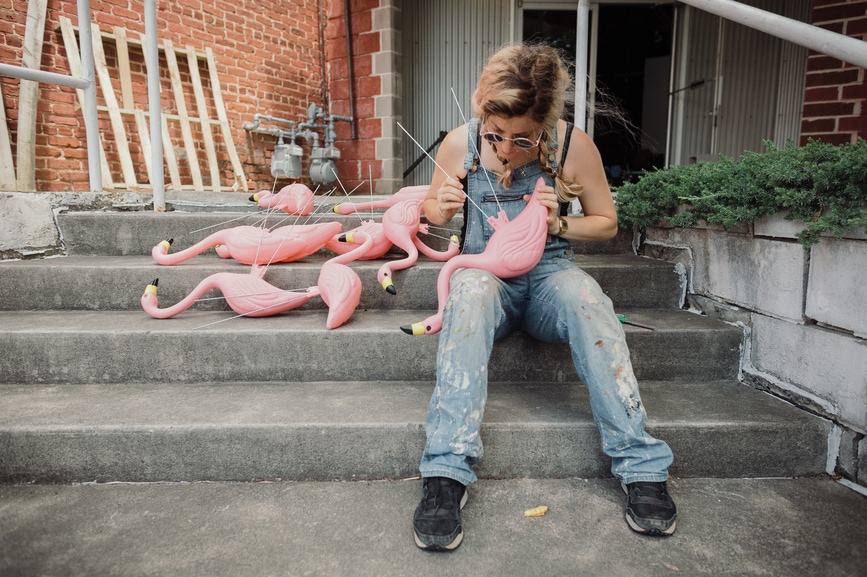
How to Market and Sell Your NFTs
Marketing Your NFTs
We’ve covered what NFTs are, how to get started minting them, and even some extra features to make your NFT exceptional.
How, how do you market and sell these?
One path taken by large NFT projects with thousands of images in a collection is to hustle on Twitter, engage with influencers, and grow a community on Discord. While this is a valid method, it’s probably not a practical strategy for a traditional fine artist.
We recommend that fine artists treat their NFTs just like other artworks.
That is, if you create a new series of paintings, perhaps you share these on Instagram, update your website, and announce them to your email list. Honor your NFT as an artistic creation by treating it comparably.
This is not a quick hype strategy. This is a long-term mature strategy to develop NFTs as an additional creative medium and revenue stream.
Pricing Your NFTs
How much should you price your NFTs at?
This is not an easy question. Like other art, their value is subjective.
However, a practical strategy for this is to remain within the ballpark of your existing pricing bracket. For example, if you sell original paintings $5000 and prints for $500, perhaps you may price an NFT at the lower end of this range.
It is entirely up to you, and up to the perceived rarity and value of your work. To be completely honest, when it comes to pricing, everyone is throwing darts in the dark.
Mistakes to Avoid in Your NFT Journey
It’s easy to stumble in new territory. Here are a few signposts of potential pitfalls to look out for and avoid.
1. Don’t mint too many at once
Once you know how, it’s easy to mint dozens of NFTs. Don’t.
Unless they’re selling like hotcakes (or perhaps even if they are selling like hotcakes), limit supply. You want to match supply to the demand you’re seeing. Actually, ideally, you want to limit your supply to be below the demand. But you need to start by creating 1 NFT.
If you create two and are unable to sell them despite trying, think twice before making a third. Perhaps your audience isn’t suitable, or perhaps you need to make the NFT more exciting.
2. Don’t move prices down, only up
In NFTs, the lowest price in a collection is known as a Floor Price. In a successful collection, the floor price generally moves up. While easier said than done, there is a simple method for this.
Price your first NFT low enough to sell it. Then mint a second one, and price it a little higher. Et cetera. The result is known as a ‘rising floor’.
3. Don’t put off your established audience
Chances are, as a fine artist, your audience appreciates fine art–especially yours! Departing from this radically and suddenly could potentially be unattractive for your audience.
To avoid this, we suggest introducing NFTs as another ‘feather in your cap’ as a creative. We also recommend that you continue to create and share your more established artworks-simple add this string to your bow.
4. Don’t be boring
There are so many simple images NFTs out there. This new technology offers myriad ways to go beyond a simple photograph. Use them!
We have shared Four Features to Make Your NFT Stand-out, and there are more. Use your creativity, give your collector an experience, make your NFT attractive!
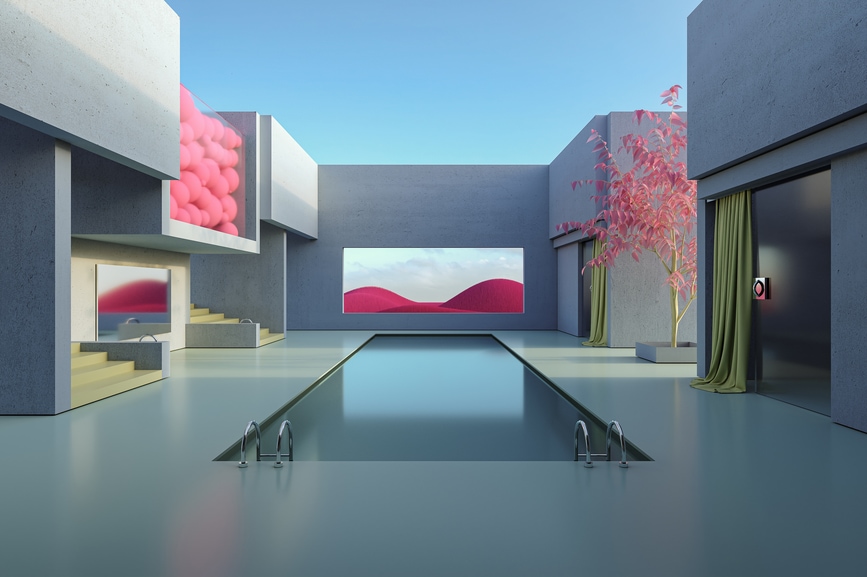
Environmental Impact of NFTs
There has been significant discussion and concern around the environmental impact of NFTs. Let’s break this down.
The Only Environmental Impact is Using Electricity
Yes, NFTs operate on blockchains, and these tend to use significant electricity.
The Ethereum blockchain recently overtook Facebook for electricity usage. (Perhaps we should have been concerned about the environmental impact of Facebook?!)Amazon, Instagram, and Zoom also use massive computer servers which consume electricity–there is no need to cherry-pick one technology over others.
Electricity Use Does Not Equate to Environmental Impact
Countries such as New Zealand and Iceland use 84 % and 100 % renewable energy respectively for electricity generation. Unfortunately, other countries continue to burn fossil fuels to produce electricity, which powers computers. We have the technology and the resources–it’s simply a question of economics and politics.
The issue is not NFTs. The issue is not using computers. The issue is not electricity usage. It’s simply a question of which resources generate that electricity–oil, and gas, or wind and water.
It Makes No Impact if You Mint an NFT or Not
The fact is that blockchains such as Ethereum and Polygon continue to operate regardless of whether you mint and sell NFTs or not. It does not increase the use of electricity or impact the environment whatsoever if another artist submits a transaction. (What actually drives up electricity use is the competition between ‘miners’ to process the transactions. This is driven by economics.)
You can Use Other Blockchains
Blockchains other than Ethereum require much less electricity to operate–for example, the Polygon network. You can mint NFTs on Polygon, with the knowledge that the carbon footprint can be offset by the planting of less than ten thousand trees per year (and someone has already planted them for this purpose!).
Other candidates include Solana, Avalanche, and Terra.
To Create is to Consume Resources
Oil painting requires pigment, extracted from minerals, mined from the Earth. So too, with the clay and copper used in sculpture. Sketching takes place on paper, made from trees cut from forests. Traditional photography development requires toxic chemicals, harmful to dispose of in the environment.
NFTs require electricity.

Words of Advice from Successful NFT Artists
We reached out to some established NFT artists to learn what they wished they had known when they first got started with minting and selling NFTs.
Here are their words of wisdom:
"I wish I would have developed more of a strategy of timing when minting and time in between those mints to provide more scarcity in the marketplaces. A better overall marketing plan. Nfts were really new when I began, no one really knew what they were doing."
I asked, "If I use the same visual in physical art and NFT art, which is authentic? Or are they both authentic? It needs to be clearly stated".
We believe that the soul (authenticity) is equally present in both physical and NFT art, even if the same visuals are used in both. But apparently, this is a spirituality that comes from the Japanese Shinto religion. Many non-Japanese have asked us which is the real thing.
I wish I had more patience in waiting to accept a bid on my NFTs. I felt I could have held certain bids longer before accepting.
Ahmed Partey | Follow them on Instagram | Superrare | his website
The Future of NFTs for Fine Artists
NFTs first emerged in 2015. They saw a wave of popularity in 2017, and again on a much larger scale in 2021. They continue to increase in volume, value and use cases (beyond art).
We do not know what the future holds, but it seems that NFTs are here to stay.
For fine artists, this may mean getting familiar with them, whether sooner or later. Some artists may prefer to avoid them altogether, or conservatively wait until they are more mainstream. This is understandable as they are somewhat new, edgy, and controversial.
For fine artists who want to lead the way with NFTs however, opportunity awaits. Being early to a new technology offers the potential to be seen as an innovator, carve out an audience, and gain traction before the market is saturated.
As comparison, it is significantly more challenging to grow an audience on Instagram today, than it was a decade ago. Part of this is that there are already over 1 billion people on Instagram–it’s crowded! By contrast, OpenSea–the largest NFT platform only crossed 1 million users in January 2022. It’s still early days.
NFTs and the Professional Artist Accelerator
For years, the Professional Artist Institute has served fine artists by offering them the education, resources, and coaching to support them in their careers as professional artists.
Part of our ethos is to evolve with the landscape of the art world. Accordingly, while we have been watching NFTs closely for some time, the recent burgeoning interest and activity in them has confirmed for us that it is indeed time to include them in our curriculum.
As such, we will shortly be including a module within our flagship program–the Professional Artist Accelerator, to ensure our students have a basic knowledge of NFTs, and know the right tools to get started in creating them if they wish.
While NFTs may not make sense for every artist’s professional goals, it can be helpful to at least have a basic understanding of what they are and how they fit into the art world. We look forward to updating our curriculum to include this in 2022.
FREE Bonus: NFTs can be confusing without knowing the terminology.
That's why we created a 3 page summary to show you the definitions of the most common NFT lingo!
Click the button to download your free bonus now and you will become more NFT savvy than 99% of your peer artists :)


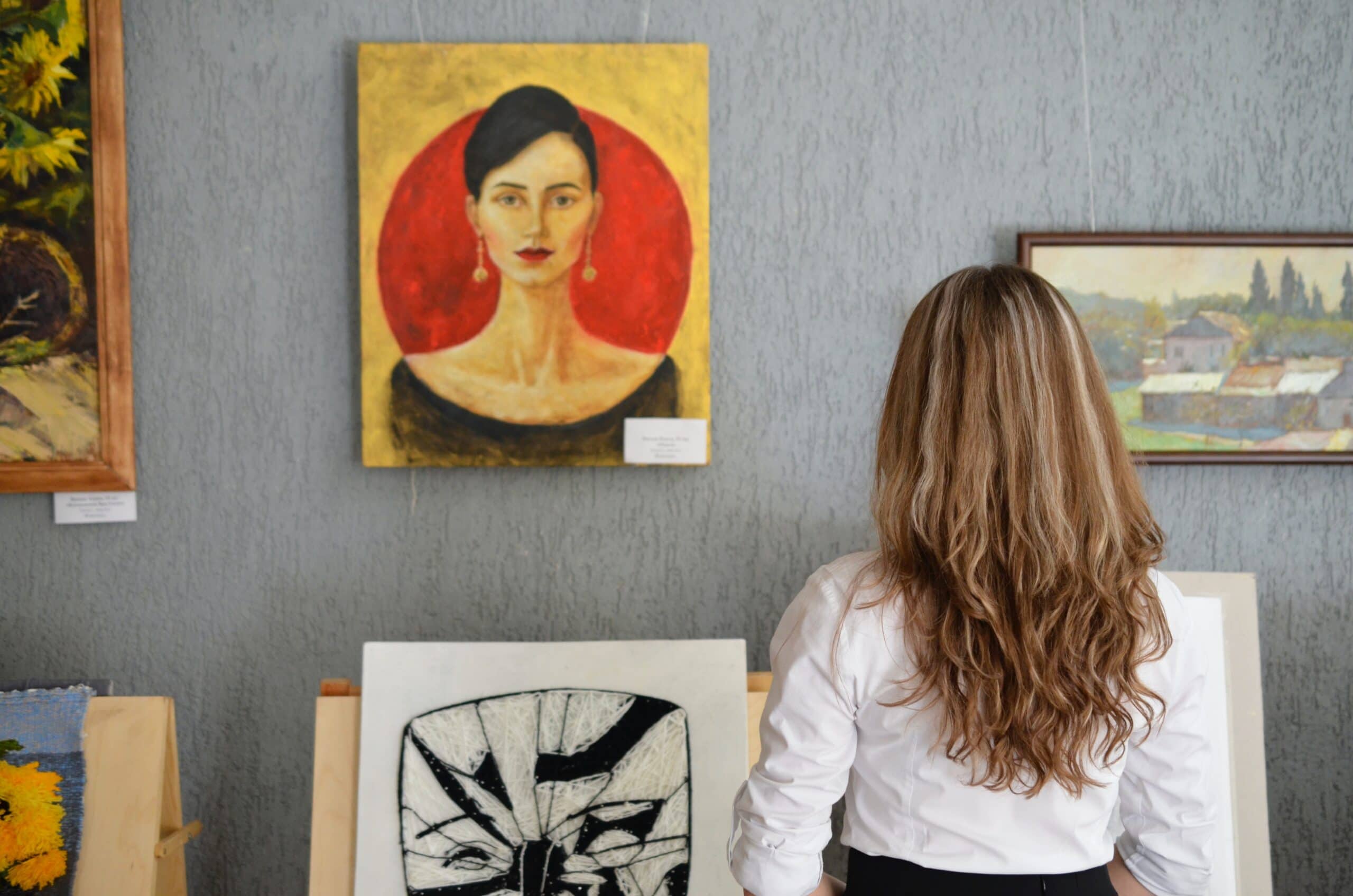
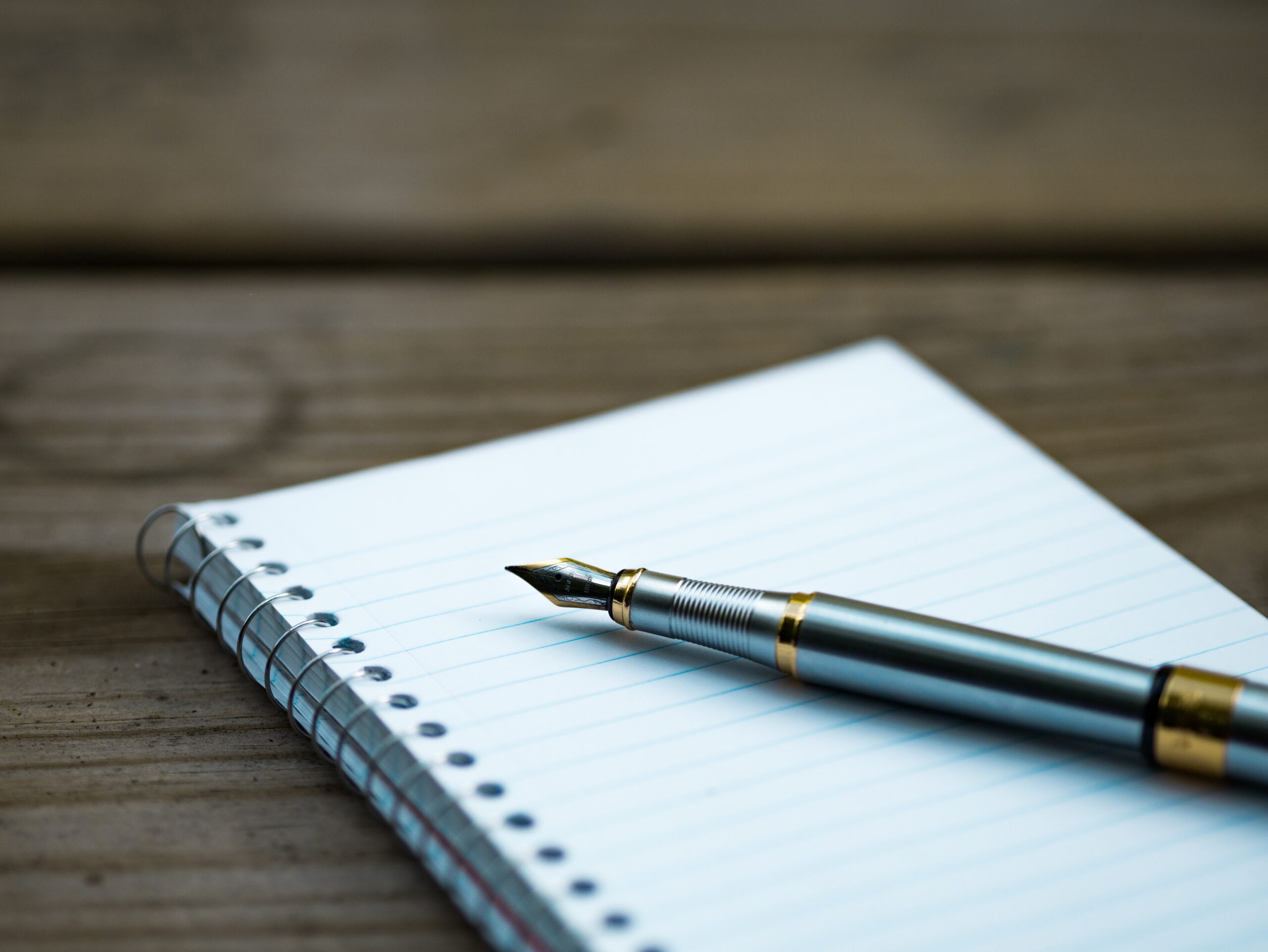
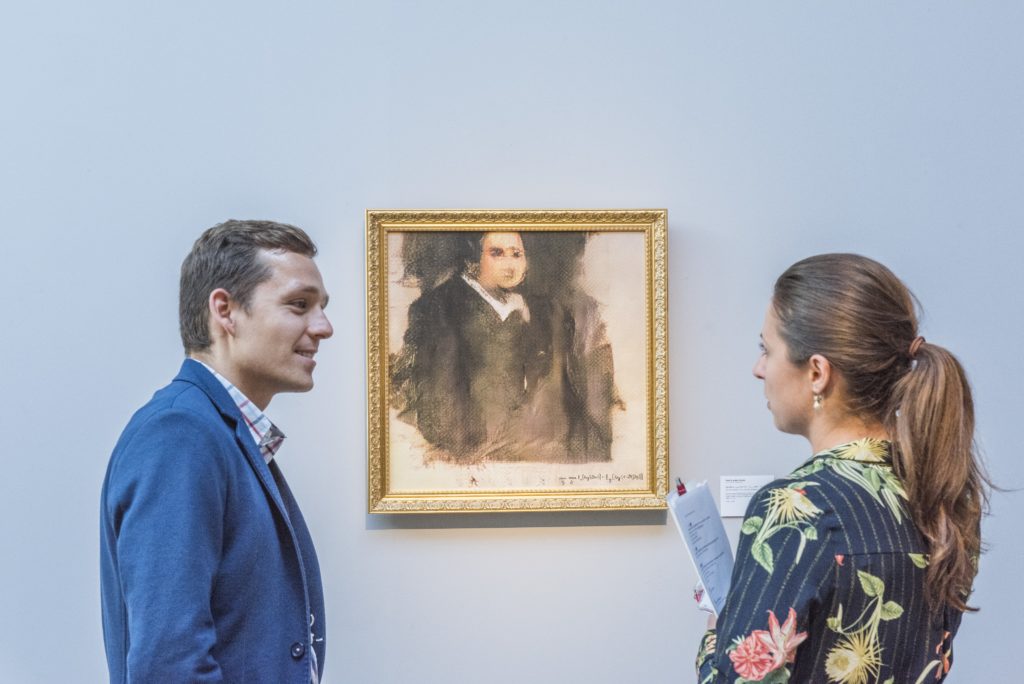
Thanks for the valuable info.
Absoultely fantastic article and great ressource for us artists. I already have a book on this topic but this article is quick succinct and a great summary. Makes my creative brain race with ideas for how to make the NFT stand out. Thanks for all the links and great advice.
Very informative, thanks!
Very helpful article. Thanks
Very useful information, thank you! For a while I wanted to understand what NFTs are, and your article is a great resource and thoroughly, clearly explained!
Thank you for this helpful information. I am very excited about this new platform to sell our art. I have not started yet though I've created art for it, I feel kind of stuck in the mud. I moved recently and that was a push back. I will focus on doing my "first" one now, after reading this I feel a bit more confident. I will keep researching too. Thanks again. Lisa B.